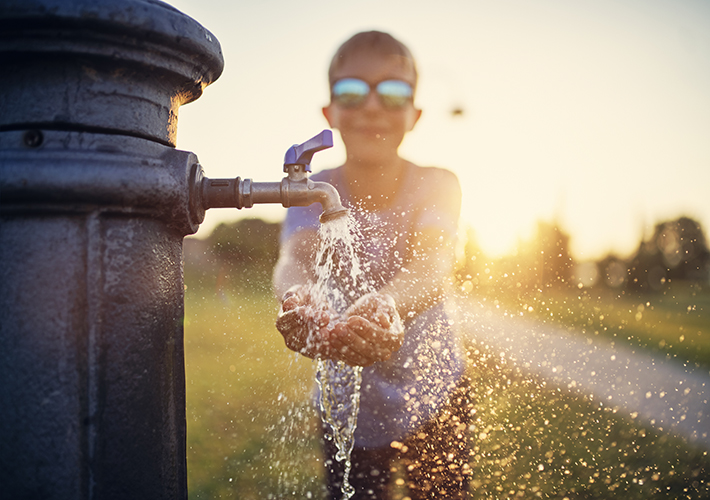
6 Standards for Cleaner Water
It’s no overstatement to call water one of the most important resources on the planet.
The human body is made up of 60% water. It’s involved in nearly every major life process. And most lifeforms can’t go more than a few days without it.
Fortunately, Earth has a lot of water. Nearly three-quarters of the planet’s surface is covered in it, in fact, although it isn’t always well managed. In addition to salty ocean water that is not safe to drink, freshwater sources can be contaminated with runoff, waste products, chemical pollutants, and more, drastically reducing our access to fresh, clean water.
According to the U.S. Centers for Disease Control, more than 780 million people worldwide don’t have access to safe drinking water, and an estimated 2.5 billion people (35% of the world’s population) lack access to proper sanitation facilities to keep their local water sources clean.
READ MORE: Standards for the Environment
ASTM International’s water committee (D19) was formed in part to address these shortcomings. The group has worked since 1932 to create standards and guidelines that help the world’s water suppliers and treatment providers maintain a clean, healthy water supply for all. It’s one of ASTM’s largest and longest-running committees, with jurisdiction over more than 290 standards focused on: water sampling and analysis; surface and ground water measurement; water cleaning and filtration product development; related terminology; and more.
“Most of what D19 does is focused on analytical methods,” says William Lipps, committee chair and Chief Science Officer with Eurofins Eaton Analytical. “We do have some subcommittees that do specifications, like how to know whether or not an ion-exchange media is effective, but for the most part our activity is focused on creating test methods to analyze pollution and water.”
Which of the committee’s many standards have been the most impactful over the years, and which new or proposed standards are worth watching? Lipps chose the following six:
1) Standard Specification for Reagent Water (D1193)
Interestingly, the committee’s most-requested standard is one that specifies types of water for laboratory use. “Almost everybody uses that standard,” Lipps says. “All the other committees that need reagent water references do, including the EPA [U.S. Environmental Protection Agency] when it describes types of water.” The standard classifies types of reagent water as ASTM Type I, II, III, and IV based on the level of microbiological contamination and how the water was processed. The standard also includes testing requirements for electrical conductivity and resistance, pH, silica, sodium, chlorides, total organic carbon, endotoxins, microbiological contamination, and more.
2) New Guide for Rapid Screening of Human Urine for Sr-90 Contamination (WK27986)
According to ScienceDirect, urine is up to 95% water, so the methods of radiochemical analysis subcommittee (D19.04) is taking the lead in developing standards for the screening and testing of urine for contamination. In this case, the primary goal of this standard is to quickly identify and separate out people who have been exposed to radioactive strontium-90 (90Sr) following a radiological event so they can receive further medical treatment without endangering others.
3) Standard Practice for Reporting Results of Examination and Analysis of Deposits Formed from Water for Subsurface Injection (D4025)
As hydraulic fracturing has become more commonplace among oil and gas producers, the committee has moved to create standards for how companies should be testing and handling the wastewater that’s produced as a result of that process. This international standard outlines how testing data should be reported and what analysis protocols should be followed in order to gather that data in the field.
4) New Practice for Collection of Wastewater Samples for the Identification and Quantification of Microplastic Particles (WK67563)
The methods for analysis for organic substances in water subcommittee (D19.06) is one of the committee on water’s most active groups, and it has recently been working with the EPA to develop standards for the analysis and handling of so-called microplastics in water. These are tiny pieces of inorganic plastic that are small enough to be suspended in water and act as a contaminant. The trick is sampling and processing microplastics in water without actually destroying the plastic in the process. The subcommittee is targeting wastewater because this type of water is usually the most contaminated.
5) Standard Test Methods and Practices for Evaluating Physical and Chemical Properties of Particulate Ion-Exchange Resins (D2187)
This standard is important for companies that make ion-exchange resins that are used in the water purification and softening processes, making water safe for human use. By establishing standardized testing methods for the manufacturing and development of these products, this standard provides the industry with a uniform basis for comparison between different particles and chemical makeups based on their ionic forms.
6) Standard Test Methods for Cyanides in Water (D2036)
Given that cyanide is a highly toxic substance, much of the work around water purification and drinking water has focused on removing it from the world’s water supply. The test methods included in this standard help water providers comply with global regulations requiring the monitoring of cyanide in industrial and domestic wastes and in surface waters.
Clean water is one of the world’s most precious commodities. And these six ASTM standards, along with many others used every day around the globe, are helping to secure and provide that resource worldwide.
Tim Sprinkle is a freelance writer based in Colorado Springs, Colorado. He has written for Yahoo, The Street, and other websites.
U.N. Sustainable Development Goals Supported:

 SN Home
SN Home Archive
Archive Advertisers
Advertisers Masthead
Masthead RateCard
RateCard Subscribe
Subscribe Email Editor
Email Editor